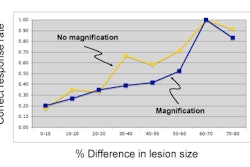SAN ANTONIO - PACS upgrades and vendor changes can be challenging and sometimes painful, but thorough planning can smooth the transition, according to Dr. Steven Horii of the University of Pennsylvania Medical Center in Philadelphia.
"You can minimize the negative impact of such changes, but it is difficult to completely eliminate it," he said.
Horii spoke about managing upgrades and changing PACS vendors during a talk at this week's Digital Healthcare Information Management Systems (DHIMS) 2008 conference, sponsored by the University of Rochester School of Medicine and Dentistry in Rochester, NY.
It's important for institutions themselves to manage upgrades, as DHIMS, PACS, and RIS do not exist as standalone systems, Horii said. The systems typically employ various interfaces, and software or hardware upgrades have the potential to affect those interfaces. While vendors are responsible for their hardware and software and their side of any interface, they are not responsible for what is on the other side of the interface, he said.
In addition, the process of installing an upgrade, new software release, or hardware usually results in downtime, Horii said. And it's unlikely that any vendor can exactly reproduce your system configuration for testing.
Interfaces usually require a minimum of setting parameters by both vendors involved; the software on both sides of the interface is expecting certain behavior and data, he said.
"Interfaces are sensitive to very small changes in behavior and data," Horii said.
Sites should have a strict policy about changes and upgrades, and vendors should understand the policy and sign off on it, he said. It may also be wise to have a test system that allows changes and upgrades to be run before implementation on operational systems.
A change and upgrade policy should require that vendors notify the DHIMS/PACS administrator before upgrading or changing any system component, Horii said. The proposed change or upgrade should be described in detail in writing, and should include a description of any changes. If a test system is available, vendors should know to install upgrades on that first, he said.
It's also important to understand the interfaces between systems, including what they do and what information flows across them. These interfaces have upstream and downstream dependencies that must be accounted for, Horii said.
"Control what, when, and by whom upgrades and changes are done," he said. "Keep logs and notes."
Saying goodbye
Sometimes it becomes necessary to change the PACS vendor itself. This can be due to a company leaving the business or a vendor having been purchased, a product that can no longer support your current work, or a system that can't be expanded to meet new needs, Horii said.
Changing vendors may also be a "corporate" decision, such as if your hospital is purchased, the hospital administration signs exclusive purchase contracts, or your practice takes over a previous contract, Horii said. A new chairman may also have his or her favorite system.
The task of migrating your old information is the biggest problem with switching PACS vendors, according to Horii. Many vendors store the DICOM attributes in their own proprietary database tables and reassemble the DICOM object when you ask for it. Other problems include issues such as patients with different IDs but the same birth date and address, studies with incorrect order/request numbers, and head CT studies that also contain chest, abdomen, and pelvis images, Horii said.
"During a migration process, each of these will either need manual intervention or processing through additional software," he said.
All interfaces from PACS to other information systems and imaging equipment will also need to be tested, he said. A new round of interface license fees may also be involved.
Based on his institution's experience, Horii recommends a "prenuptial" agreement with your PACS vendor. This agreement should provide for guaranteed access to the database and data, as well as the details of all intersystem interfaces. If a vendor goes out of business, access to the database schema should also be ensured, he said.
Vendors should offer an option to continue service contracts on a month-by-month basis with cost constraints. Service should also be on the same terms as during the system's active life, Horii said. He also recommends asking about DICOM objects that contain private groups and elements, and how those are to be migrated.
In other recommendations, sites should consider changing their disaster recovery backup to a DICOM media storage application profile system, he said. They should also weigh the use of a vendor-independent storage solution, and be prepared for failures of the old system before completing the changeover, Horii said.
An agreement with the new vendor should include realistic and firm changeover dates, and contingency plans if those dates are missed. Agreements must spell out who pays for service on the old system if changeover dates are missed, he said.
Sites should consider beginning database conversion well in advance of the changeover, with a target set for the amount of data to be converted prior to the switch, Horii said. The parties should determine who is going to perform the database cleanup.
Since parallel systems will have to be run for a while, institutions will also need to determine who pays for the extra network drops and possibly additional network hardware needed, Horii said. The reuse of equipment or furniture from the old system will also need to be factored in.
Horii recommends having an informatics "historian," who records dates of all systems and software installation. This person would keep notes of problems, their follow-up, and their resolution, he said.
"Such records are very valuable and have saved some institutions considerable expenses," he said.
While a change of PACS vendors is going to be painful, you can take steps to get some relief from the process, according to Horii.
"Most important is thorough planning for the change," he said.
By Erik L. Ridley
AuntMinnie.com staff writer
March 27, 2008
Related Reading
Effective communication is crucial for radiology department success, March 20, 2008
Using informatics to meet communication challenges, February 7, 2008
High-tech communication tools improve patient care, studies find, December 6, 2007
Developing a cost-effective image QA workflow with PACS, November 21, 2007
Clinicians still need access to older imaging studies, December 10, 2007
Copyright © 2008 AuntMinnie.com



















